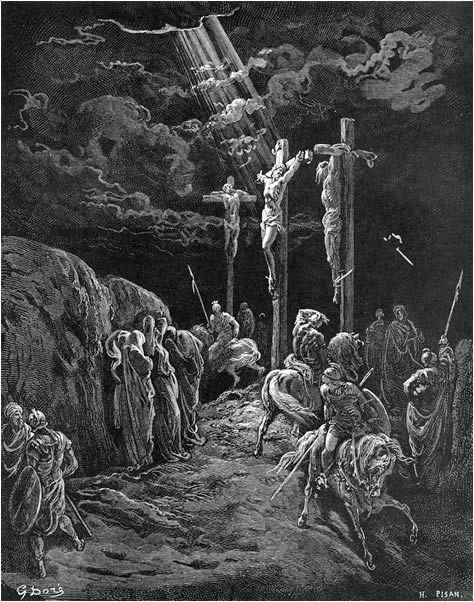 | ||
In 1866, the French artist, printmaker, and illustrator Gustave Doré (1832–1883) published a series of 241 wood engravings for a new deluxe edition of the 1843 French translation of the Vulgate Bible popularly known as the Bible de Tours. This new edition was known as La Grande Bible de Tours and its illustrations were immensely successful. They have been reproduced countless times worldwide, influencing the visual arts and popular culture in ways difficult to measure.
La Grande Bible de Tours was a large folio (“grand in folio”) edition published in two volumes simultaneously by Mame in Tours, France and by Cassell and Company in England in 1866. The French translation known as the Bible de Tours had originally been published in 1843 and was done by Jean Jacques Bourassé (1813-1872) and Pierre Désiré Janvier.
The series comprises 139 plates depicting scenes from the Old Testament, 21 from the Apocrypha (deuterocanonical books), and 81 from the New Testament.
Background
Doré’s artistic reasons for undertaking the Bible project are outlined by his biographer, Joanna Richardson…
It offered him an almost endless series of intensely dramatic events. His visions of the looming tower of Babel, the plague of darkness in Egypt, the death of Samson, Isaiah’s vision of the destruction of Babylon; these vast, forbidding scenes, heavy with doom, remind one of the visions of John Martin. They also reveal many elements by now familiar in Doré’s work: the mountain scenes, the lurid skies, the complicated battles, the almost unremitting brutalism. Doré’s illustrations of the Old Testament remind us, above all, of the God of Wrath: of massacres and murders, decapitations and avenging angels. There is, too, a period element: the angels are Victorian angels, full of sentiment; the women are, again, keepsake women, the children are Victorian children: sentimental or wise beyond their years.
